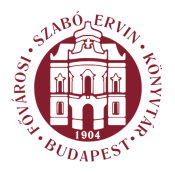Prohászka László: Polish Monuments - Our Budapest (Budapest, 2001)
*—" 1 8 9 2 - 19 7 0 A MAGYÁR KIRÁLYI BELÜGYMINISZTÉRIUM TISZTVISELöJEKÉNT A NEMZETET SZOLGÁLTA. EZÉRT HÁGÁNK HITLERI ÉS SZOVJET MEGSZÁLLÁSAKOR ÜLDÖZTETÉST, MEGALÁZTATÁST ÉS SZENVEDÉST KELLETT ELVISELNIE. E HÁZ. FALAI KÖZÜL IRÁNYÍTOTTA TÖBB NEMZET MENEKÜLTJEINEK SORSÁT, KÖZTÜK A MINTEGY 130 EZER LENGYEL MEGMENTÉSÉT. 19 9 5. S Z E M E RE BE 8TALAN TUDOMÁNYOS TÁRSASÁG Plaque commemorating László O’sváth was from this building / that he pursued policies aimed at protecting the Hues of refugees of various nationalities, including 130 thousand Poles, whom he saved from death. / 1995 / Szemere Bertalan / Scientific Society. At once simple and noble in design, the plaque is ornamented with the Hungarian coat of arms in the top left-hand corner, and the bronze coat of arms of the O’sváth family in the top right-hand corner. It does not diminish the merits of either László O’sváth or colonel Zoltán Baló, who also did much for the refugees, if we mention that the greatest helper of the Poles was József Antall Sr (1896-1974) head of Department IX (the Social Department) of the Ministry of the Interior. The memory of Antall is preserved by memorial plaques in Warsaw, Tarnow and Paris as well as a tree planted in his memory in Jerusalem. For a long time, the Polish, French, English, American, Dutch and other refugees and their relatives had only his grave in the Farkasrét cemetery (which bears the inscription Polonia semper fidelis—Poland will always remain faithful) where they could pay their tribute. Antall’s name is now included on the marble plaque listing names of those who risked their lives in saving persecuted Jews, unveiled on 5 July 1997 in Wallenberg Park, to the rear of the Dohány utca synagogue. The soldiers of the Home Army, together with 40
